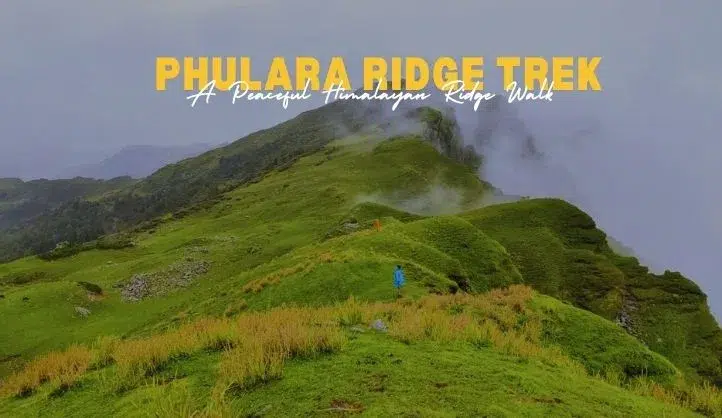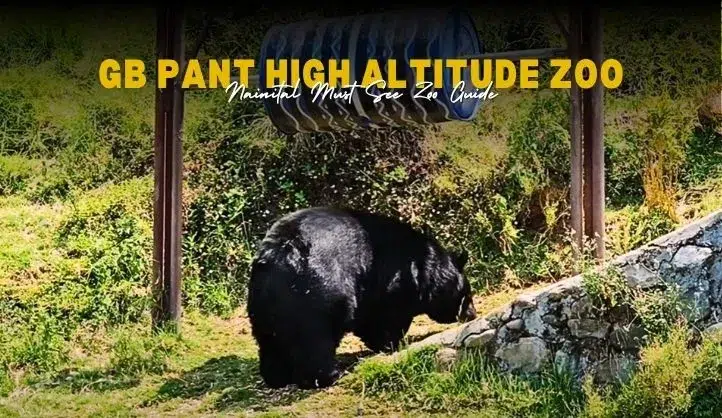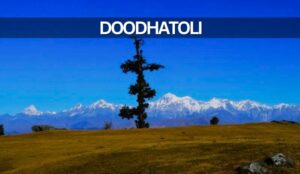“Reach the Summit of Kamet Peak 🏔️ | Embark on a Himalayan Adventure of a Lifetime!”
About Kamet Peak
Kamet Peak is located in India’s Uttarakhand region’s Chamoli District.
- Impressive Elevation: As the second-highest peak in the region, Kamet Peak reaches a towering height of 7,756 meters (25,446 feet) above sea level.
- Garhwal Himalayas: This magnificent summit is a proud part of the Garhwal Himalayas, contributing to the region’s awe-inspiring landscape.
- Distinctive Shape: With its pyramid-like form, Kamet Peak stands as a distinguished and easily recognizable landmark.
- Spiritual Significance: In Hindu mythology, Kamet Peak holds cultural importance and is often associated with the legendary Lord Shiva.
- A Challenge for Adventurers: The mountain’s ascent poses a formidable challenge, attracting daring mountaineers and explorers eager to test their skills against its technical complexities.
- Nature’s Drama: Kamet Peak offers more than just a physical test; it provides a spiritual communion with nature’s grandeur, transcending the boundaries of the climb itself.
- Enriching Surroundings: Kamet Peak shares its panoramic views with neighboring peaks, including Mana Parbat, Abi Gamin, Mukut Parbat, and Neelkanth.
- A Tapestry of Adventure: Kamet Peak is a tapestry woven with cultural significance, challenges of ascent, and the breathtaking beauty of the Himalayas.
Historical Significance:
- Early Encounters: Kamet Peak first appeared on the radar of explorers during the colonial era. In 1931, British mountaineer Frank Smythe led one of the earliest expeditions to Kamet, setting the stage for future adventurers to follow.
- World War II Connection: Kamet Peak holds a unique place in history as a location of strategic importance during World War II. It served as a vital vantage point for surveillance in the region.
- Pioneering Ascents: Over the years, Kamet Peak has witnessed several attempts at conquering its challenging terrain. Notably, in 1931, the team led by Frank Smythe reached an impressive height of 7,050 meters (23,130 feet) on the mountain.
- Post-Independence Expeditions: Following India’s independence, Kamet Peak continued to attract explorers from different corners of the world. The desire to conquer its summit ignited a spirit of international collaboration and mountaineering.
- Recent Achievements: The history of Kamet Peak is a tale of both triumph and challenges. Modern climbers continue to push the boundaries of human potential, and their successes stand as a testament to human resilience and determination.
As you stand in the shadow of Kamet Peak, you are not only immersed in the grandeur of the Himalayas but also connected to a storied past of exploration, courage, and the pursuit of the unknown. The mountain’s history adds depth to its allure, reminding us that each step taken on its slopes is a continuation of a legacy that spans generations.
Location of Kamet Peak:
Mount Kamet, one of the majestic peaks of the Garhwal region in the Indian state of Uttarakhand, proudly stands as the second-highest mountain in this region. Its impressively high top rises 7,756 meters (25,446 feet) above sea level.
This imposing peak is renowned for its challenging yet alluring nature, attracting mountaineers and adventurers from around the world.
- Situated in Chamoli District: Kamet Peak is located in the Chamoli District of Uttarakhand, India.
- Second-Highest Peak: With an elevation of 7,756 meters (25,446 feet) above sea level, it proudly holds the position of the second-highest peak in the region.
- Part of Garhwal Himalayas: Kamet Peak is a prominent feature of the Garhwal Himalayas, contributing to the region’s breathtaking landscape.
- Distinctive Pyramidal Shape: The mountain’s unique and recognizable pyramidal shape sets it apart from its surroundings.
- Cultural and Mythological Significance: Rooted in Hindu mythology, Kamet Peak is often associated with Lord Shiva, adding a spiritual and cultural dimension to its allure.
- Attraction for Mountaineers and Explorers: The mountain’s challenging terrain and unpredictable weather conditions make it an alluring destination for adventurers and explorers.
- Adventure and Spiritual Connection: Kamet Peak offers not only thrilling experiences but also a deep spiritual connection with the natural world.
- Awe-Inspiring Himalayan Landscape: The vistas surrounding Kamet Peak are awe-inspiring, showcasing the grandeur of the Himalayas.
- Symbol of Nature’s Magnificence: It stands as a symbol of the awe-inspiring beauty of the natural world and the indomitable spirit of human exploration.
How To Reach Kamet Peak:
Embarking on a journey to Kamet Peak, nestled in the Chamoli District of Uttarakhand, India, requires meticulous planning and a spirit of adventure. As the second-highest peak in the region, with its summit soaring to an elevation of 7,756 meters (25,446 feet) above sea level, the ascent to Kamet Peak promises an unforgettable experience that blends exploration with the awe-inspiring beauty of the Garhwal Himalayas.
Choosing Your Route:
- Joshimath Base: Your journey to Kamet Peak typically begins from Joshimath, a scenic town nestled in the lap of the Himalayas. From here, you embark on a trek that takes you through enchanting landscapes and towards the heart of the majestic mountains.
- Trail Selection: Several trails lead to Kamet Peak, each offering a unique perspective and challenges. The route through the Chaturangi Glacier is a popular choice, providing a mesmerizing journey through glacial terrain and high-altitude splendor.
Preparation and Essentials:
- Physical Fitness: Scaling Kamet Peak demands robust physical fitness. Engage in a comprehensive fitness routine to enhance your stamina, endurance, and overall strength.
- Technical Expertise: As you ascend higher, the terrain becomes more challenging. Acquire basic mountaineering skills and familiarize yourself with using ropes, crampons, and ice axes.
- Gear and Equipment: Invest in high-quality trekking and mountaineering gear. Ensure you have proper clothing, footwear, and safety equipment to navigate the varying conditions.
Acclimatization and Altitude:
- Gradual Ascent: Acclimatization is crucial to conquer Kamet Peak. Ascend gradually, allowing your body to adjust to the increasing altitude and reduced oxygen levels.
- Rest Days: Plan rest days at different altitudes to allow your body to adapt. Adequate acclimatization reduces the risk of altitude-related illnesses.
Guides and Local Support:
- Experienced Guides: Enlist the services of experienced local guides who are familiar with the terrain, weather conditions, and safety protocols.
- Support Team: A dedicated support team of porters and cooks ensures that your expedition is well-equipped and organized.
The Summit Experience:
- Technical Climbs: As you approach the summit, technical climbs may be required. Navigate ice and rock sections with caution and under the guidance of your experienced team.
- Awe-Inspiring Views: Reaching the summit rewards you with awe-inspiring panoramic views of the Himalayan range, a breathtaking testament to nature’s magnificence.
Embarking on the journey to Kamet Peak is more than just conquering a summit; it’s an immersion into the heart of the Himalayas, a testament to human determination, and a communion with the majestic landscape that has inspired explorers for generations.
Trekking Tips for Kamet Peak:
Scaling the majestic Kamet Peak in the Chamoli District of Uttarakhand, India, is a remarkable endeavor that demands meticulous preparation and a spirit of adventure. As the second-highest peak in the region, standing tall at 7,756 meters (25,446 feet) above sea level, conquering Kamet Peak requires more than physical stamina – it calls for strategic planning, technical expertise, and a deep appreciation for the Garhwal Himalayas’ breathtaking beauty.
1. Plan Your Route:
- Begin your journey from Joshimath, the starting point for the Kamet Peak trek.
- Choose the Chaturangi Glacier route, known for its scenic beauty and challenging terrain.
2. Physical Preparation:
- Engage in a comprehensive fitness regimen to enhance endurance and strength.
- Incorporate cardiovascular exercises, strength training, and flexibility workouts.
3. Technical Skills:
- Acquire basic mountaineering skills such as rope techniques, crampon usage, and ice axe maneuvers.
- Familiarize yourself with techniques for navigating glacial terrain.
4. Gear and Equipment:
- Invest in high-quality trekking and mountaineering gear, including clothing, footwear, and safety equipment.
- Pack essential items like a headlamp, first aid kit, sunscreen, and a multi-tool.
5. Altitude Acclimatization:
- To give your body time to adjust to the shifting altitudes, ascend gradually.
- Plan rest days at various altitudes to minimize the risk of altitude sickness.
6. Hydration and Nutrition:
- Stay hydrated by consistently drinking water throughout the trek.
- Pack nutrient-rich, lightweight meals to fuel your body during the expedition.
7. Experienced Guides:
- Enlist the services of experienced local guides who are familiar with the terrain and weather conditions.
- Trust their expertise and follow their instructions for a safe and successful climb.
8. Safety Measures:
- Prioritize safety at all times and adhere to the guidance of your guides.
- Carry a fully stocked first aid kit and be prepared for emergencies.
9. Team Support:
- Build camaraderie with your fellow trekkers and support each other throughout the journey.
- Rely on your team for assistance and motivation during challenging sections.
10. Mental Resilience:
- Maintain a positive mindset and focus on your goal of reaching Kamet Peak.
- Embrace the challenges as part of the adventure and stay determined.
Conquering Kamet Peak is a test of physical endurance, mental strength, and a deep connection with nature’s grandeur. By adhering to these trekking tips, you’ll enhance your chances of a successful ascent while creating memories that last a lifetime.
Some Facts About Mount Kamet:
- Location and Geography: Mount Kamet is situated in the Chamoli District of Uttarakhand, India. It is part of the Garhwal Himalayas, a section of the larger Himalayan mountain range. The peak’s distinct pyramidal shape and snow-clad slopes contribute to its striking visual appeal.
- Significance and Mythology: In Hindu mythology, Mount Kamet is considered the earthly representation of Lord Shiva. It holds spiritual significance and is revered by the local communities residing in the region.
- Early Explorations: The mountain gained the attention of explorers and climbers during the colonial era. British mountaineer Frank Smythe conducted one of the earliest explorations of Mount Kamet in 1931.
- Challenges and Expeditions: Scaling Mount Kamet presents significant challenges due to its technical difficulty and unpredictable weather conditions. Numerous expeditions have been attempted, with varying degrees of success.
- Glacier Connectivity: Mount Kamet is connected to several glaciers, including the Meade’s Col Glacier and the Mukut Parbat Glacier. These glaciers contribute to the complex topography of the region.
Mt. Kamet Expedition (7756 M): A Month-Long Itinerary
Embarking on the incredible Mt. Kamet Expedition, with its towering elevation of 7,756 meters (25,446 feet), is a journey of endurance, skill, and the thrill of conquering one of the mighty peaks of the Garhwal Himalayas. Over the course of a month, adventurers will immerse themselves in the beauty of the Himalayan landscape, face technical challenges, and forge memories that will last a lifetime.
Day 1-3: Arrival and Acclimatization
- Arrive in Joshimath, the starting point of the expedition.
- Begin acclimatization with short treks and exploration of the local surroundings.
- Attend a thorough briefing and gear check by the expedition team.
Day 4-8: Base Camp Preparation
- Trek to Base Camp, situated at a lower altitude to aid acclimatization.
- Set up Base Camp, establish essential facilities, and participate in skill-building exercises.
Day 9-12: Establish Advanced Base Camp (ABC)
- Ascend to Advanced Base Camp (ABC) while navigating technical terrain.
- Acclimatize at ABC and participate in rope techniques and glacier travel training.
Day 13-15: Camp I and Skill Enhancement
- Move to Camp I, gaining further altitude and experiencing the challenges of higher terrain.
- Enhance technical skills through ice and rock climbing practice.
Day 16-18: Camp II and Route Exploration
- Progress to Camp II, delving deeper into the mountain’s challenges.
- Scout and prepare the route for the higher camps.
Day 19-22: Camp III and Summit Push Preparation
- Ascend to Camp III, nearing the peak’s altitude.
- Finalize summit push strategies, including rest and preparation for the push.
Day 23-26: Summit Push and Conquering Mt. Kamet
- Begin the summit push, tackling technical sections and overcoming altitude challenges.
- Reach the majestic summit of Mt. Kamet, savoring the breathtaking views.
Day 27-30: Descent and Reflection
- Descend to Base Camp and Advanced Base Camp, reflecting on the successful expedition.
- Pack up equipment, bid farewell to the mountain, and descend to Joshimath.
Note: The itinerary is subject to change based on weather conditions, group dynamics, and other factors. Safety remains a top priority throughout the expedition.
🏞️ Journey to Kamet Peak: Trekker’s Tale 🏔️🚶♂️🌄
In the heart of Uttarakhand’s Chamoli District lies an adventure that beckons the curious, the daring, and those with a penchant for the extraordinary. Picture this: a colossal sentinel named Kamet Peak, standing tall at 7,756 meters (25,446 feet), draped in mystery and embraced by the Garhwal Himalayas’ embrace. This is where our story begins – a tale of conquering summits, forging bonds, and discovering the essence of nature’s grandeur.
Imagine standing at the threshold of Joshimath, a gateway to dreams. It’s here that our fellowship embarked on a journey, united by a shared hunger for exploration. As we treaded the path less taken, the Chaturangi Glacier route revealed its secrets – a mesmerizing choreography of glacial blues and rocky challenges that tested our mettle.
Now, let me introduce you to our protagonists: Stamina and Determination. They were our trusty companions, forged through sweat and perseverance. With every step, they whispered tales of resilience, reminding us that every mountain conquered was a victory over self.
Ah, the art of technical prowess – a dance between man and mountain. Our ropes became our lifelines, our ice axes chiseled paths to the unknown. It was here that our characters – Grit and Ingenuity – took center stage. With a mix of caution and courage, we embraced the complexities, each move a brushstroke in the masterpiece of our ascent.
And what’s an adventure without the right gear? Our ensemble was meticulously chosen – a symphony of clothing, equipment, and provisions that ensured our comfort and safety. Among them, the humble headlamp, our beacon in the night; the versatile multi-tool, a troubleshooter in a compact form; and the trusted first aid kit, a guardian against the unexpected.
The rhythm of altitude was our guide, a melody composed by nature herself. Gradual altitude gain and rest days bestowed upon us the gift of acclimatization. It was during these pauses that we became one with the Himalayas – witnessing sunrises that painted the peaks in gold and sunsets that whispered secrets to the wind.
Ah, the guides – our mentors and storytellers. Their tales of the mountains were woven into every step, their wisdom a compass guiding us through the labyrinth of the unknown. Safety was their anthem, their expertise a shield against the unpredictable.
The crescendo of our tale led us to the summit – a theater of challenges and triumphs. Ice and rock sections demanded our attention, and with every foothold, we etched our legacy on Kamet’s majestic canvas. And then, the climax: the summit’s embrace, a panoramic revelation that transcended words. “The Himalayas bowed before us, a testament to human audacity and nature’s splendor,” we whispered to ourselves.
As we descended from our zenith, we carried with us more than memories. We held stories of camaraderie, of conquering the impossible, and of finding our place within the embrace of the mountains. Our journey to Kamet Peak was more than an adventure; it was a symphony of experiences, a canvas painted with determination, and a testament to the indomitable human spirit.
Some Facts About Neighboring Peaks of Mount Kamet:
- Neighboring Peaks: Mount Kamet is flanked by several notable peaks, contributing to the awe-inspiring panorama of the area. Neighboring peaks include Mana Parbat, Abi Gamin, Mukut Parbat, and Neelkanth.
- Mana Parbat: Mana Parbat, also known as Chaukhamba, is a group of four peaks that include Badrinath, Nilgiri Parbat, Mana, and Ghori Parbat. These peaks are revered in Hindu mythology and offer a stunning backdrop to Mount Kamet.
- Abi Gamin: Abi Gamin is another prominent peak near Mount Kamet. It is characterized by its steep and challenging routes, attracting experienced climbers seeking adventure.
- Mukut Parbat: Mukut Parbat, with its twin summits, adds to the dramatic landscape surrounding Mount Kamet. The name “Mukut” translates to “crown,” symbolizing the regal presence of these peaks.
- Neelkanth: Neelkanth, with its distinctive blue hue, stands as a sentinel overlooking the region. Its captivating beauty complements the grandeur of Mount Kamet and its neighboring peaks.
Conclusion: Unveiling the Soul of Kamet Peak
In the heart of the Garhwal Himalayas, Kamet Peak stands as a testament to human tenacity, the allure of exploration, and the unyielding spirit of adventure. As trekkers, mountaineers, and wanderers, we’ve journeyed through rugged terrains, climbed icy precipices, and felt the exhilaration of conquering the second-highest summit in this majestic range.
Yet, Kamet Peak is more than a geological marvel; it’s a storyteller. Its towering heights narrate tales of courage, camaraderie, and the unbreakable bond between humans and nature. It whispers legends of pioneers who carved paths through the unknown, and it invites us to add our own chapter to its timeless saga.
FAQ for Kamet Peak:
What is the best time to attempt the Kamet Peak expedition?
The ideal time for the Kamet Peak expedition is during the late spring and early summer months of May and June, when the weather is relatively stable.
Are guides and support available for the Kamet Peak expedition?
Yes, experienced local guides and support teams are available to assist trekkers and mountaineers throughout the Kamet Peak expedition.
Is acclimatization important for the Kamet Peak trek?
Yes, proper acclimatization is crucial to adapt to the high altitudes and reduce the risk of altitude-related illnesses during the Kamet Peak expedition.
What kind of gear is required for the Kamet Peak trek?
Trekkers need to have proper mountaineering gear, including clothing, footwear, ropes, ice axes, crampons, and safety equipment to tackle the technical challenges.
Can beginners attempt the Kamet Peak expedition?
The Kamet Peak expedition is recommended for experienced trekkers with basic mountaineering skills due to its technical nature and high altitude.
What makes the Kamet Peak trek a unique experience?
The Kamet Peak trek offers a blend of breathtaking Himalayan landscapes, technical challenges, cultural exploration, and a sense of accomplishment upon reaching the summit.









